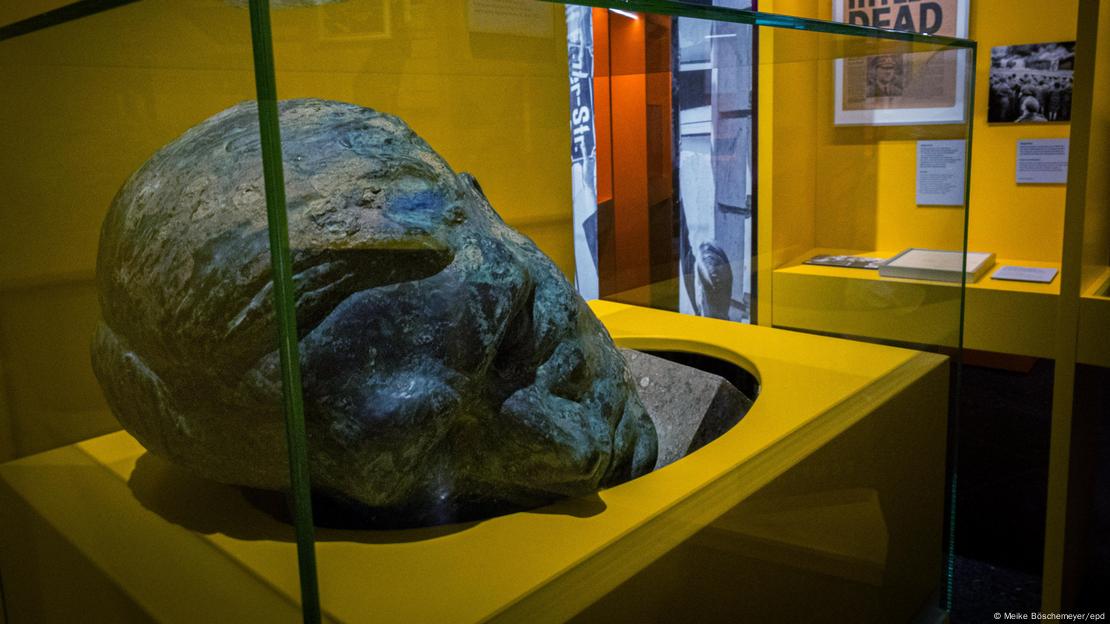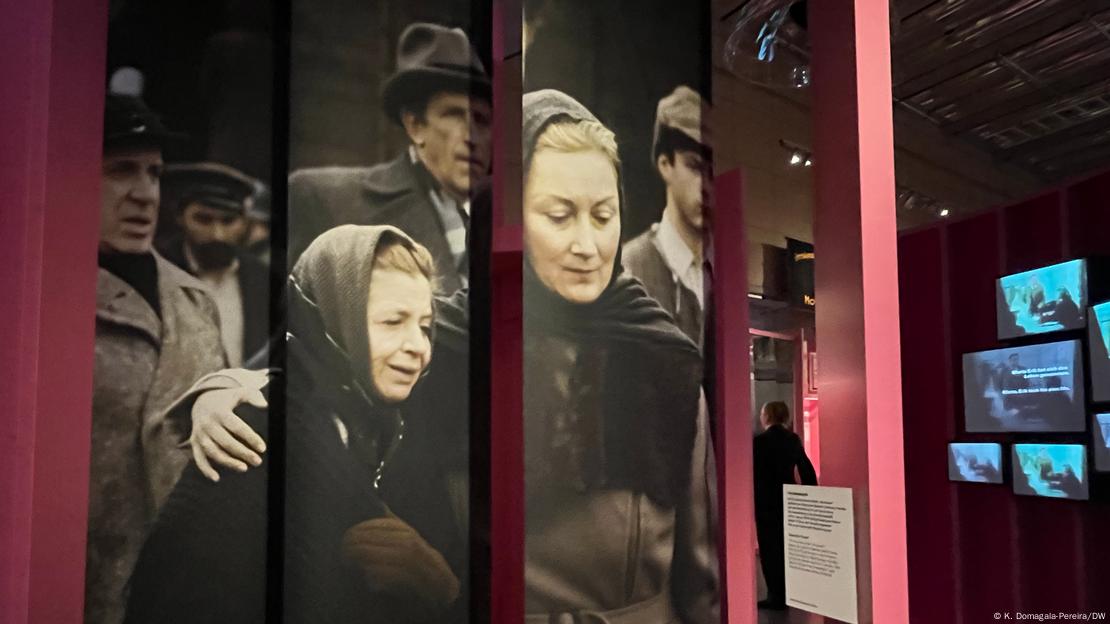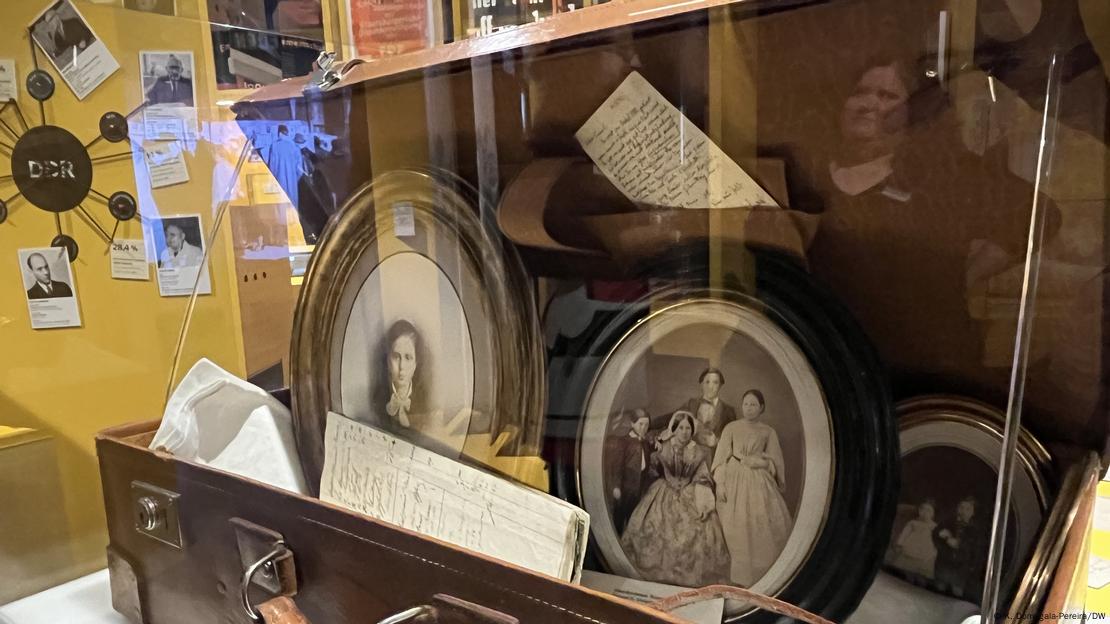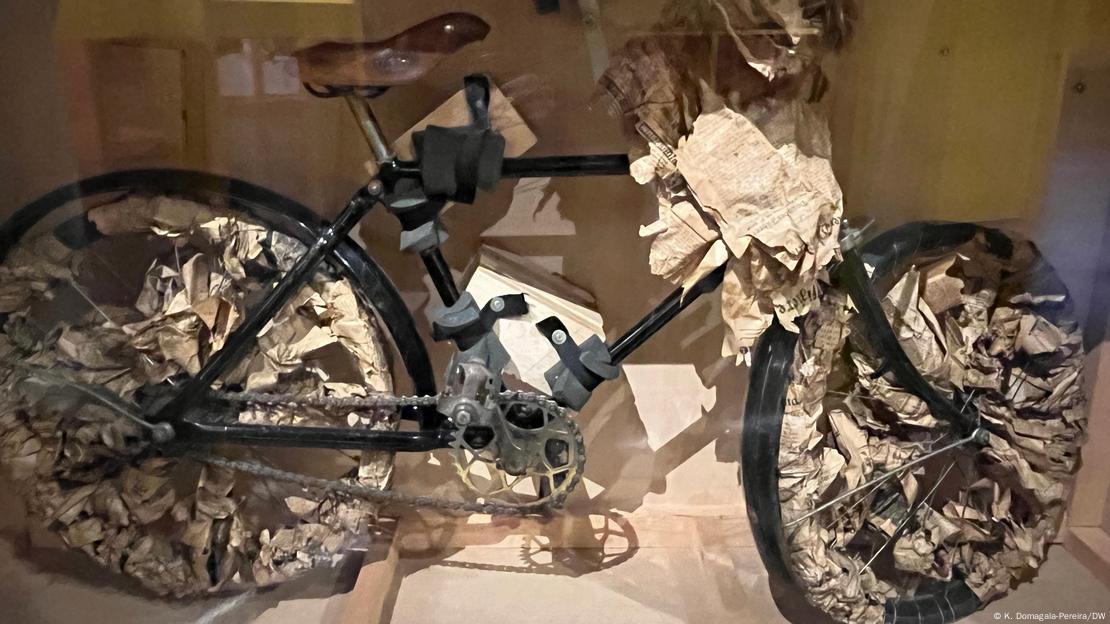Katarzyna Domagala-Pereira
09/26/2024
From secret adoration to loud dismay, Germans have come to terms with the Nazi past over 80 years in very different ways, as a new exhibition shows.
The German press helped to create shifting perspectives on Hitler in postwar GermanyImage: Federico Gambarini/dpa/picture alliance
In 1932, sculptor Hedwig Maria Ley, a Nazi sympathizer, created the first authorized depiction of soon-to-be German dictator Adolf Hitler.
The Nazi party made her bust the model for portraying the leader throughout his notorious rule. However after Hitler's death by suicide and Germany's defeat in World War II, Ley buried the bust in her garden.
Twenty years later, a relative of her gardener dug up the sculpture and placed it proudly on the fireplace in his living room — where it stayed until the 1980s.
Such continuing reverence for the infamous Nazi leader was in stark contrast to young people who wanted to disassociate from older generations who had often embraced German fascism.
This generational divide is the basis for a new exhibition, "After Hitler: Germany's Reckoning with the Nazi Past," now on show at the Haus der Geschichte (House of History) in the former German capital, Bonn.
The story of Hedwig Maria Ley's bust of Hitler is a feature of the exhibition tracing shifting attitudes to Nazism across near 80 years. It illustrates how some Germans still adored a tyrannical leader who fomented the horrors of the Holocaust.
While the following "68er" protest generation deplored their parents' Nazi sympathies, "After Hitler" shows how far-right political parties like the Alternative for Germany (AfD) are again on the rise in Germany.

The bust that helped create an enduring Hitler myth for a war-time generation
Image: Meike Böschemeyer/epd
Were Nazi 'fellow travellers' only acting under orders?
After the World War II, many Germans wanted to wipe away the memory of the former dictator, including through the renaming of streets that celebrated Hitler, his birthplace and so on.
As the adult generation who survived the war were busy rebuilding their lives in a destroyed postwar Germany, many did not talk about their own role in the Third Reich.
They were reluctant to fill out denazification questionnaires, and absolved themselves of responsibility by blaming Hitler and his commanders like Joseph Goebbels and Hermann Göring for war crimes.
The allied occupiers who charged Nazis for these crimes considered many Germans as "fellow travellers" who willingly worked for the Nazi regime — yet many still kept their jobs in the postwar republic — including in the new capital, Bonn.
Films revealing the Nazi concentration and extermination camps became compulsory screenings for West Germans, but it was different in the newly formed German Democratic Republic in the east.
There, the Socialist Unity Party of Germany (SED) propagated the anti-fascist founding myth that former Nazis only existed in the West. Anyone who embraced the socialist state was freed from guilt.

Perspectives on perpetrators
The "After Hitler" exhibition in Bonn explores the political and social context of the four generations of Germans who have tried to process the Nazi past in different ways.
Among the archival material on display is footage of a television reporter who in 1962 asks passers-by on the street about Jewish people. Some openly tell the reporter that Jews should not be allowed to work in the federal government, or that "there are too many of them," or even that "they were rightly persecuted."
These racist statements emerged from a generation of perpetrators of Nazi power and crimes.
Soon after, in 1965, several graves in the Jewish cemetery of the Bavarian city of Bamberg were desecrated. Five years later, an arson attack was carried out on a retirement home belonging to the Jewish community in Munich, killing seven Holocaust survivor residents. These were among hundreds of anti-Semitic attacks at the time.
At the same time, one exhibition section describes the generation of children who shaped social life from the 1960s and critically questioned their parents about their role in the Third Reich.
The search for the truth about the Nazi era was also becoming a part of popular culture. In 1979, twenty million Germans aged fourteen and over watched the award-winning US miniseries "Holocaust." Tens of thousands called the studio after the film was broadcast, most saying the film had opened their eyes.
Many were part of the next generation — the grandchildren of the National Socialist generation — who grew up in the 1980s and 1990s, in a time of crisis but also reunification and the rise of the environmental movement.

A still from the miniseries 'Holocaust,' which starred Meryl Streep and had a big impact on a new generation in Germany
Image: K. Domagala-Pereira/DW
Telling the story of the victims
The "After Hitler" exhibition also devotes significant space to the postwar echoes of those who suffered under Nazism.
Among the display of some 500 objects is an unremarkable, small brown public transport ticket. It belonged to Erna Meintrup, who survived the Theresienstadt ghetto — which served as a collection and transit camp in the Nazi concentration camp system — before returning to her hometown of Münster.
But like many persecuted people, Meintrup did not talk about her imprisonment.
Also featured at the Haus der Geschichte is a bicycle belonging to a Jewish boy who gave it to a friend for safekeeping. It was not until 2007 that this friend, now an elderly man, gave the bicycle to an antiquarian bookshop. He had waited in vain for decades for his friend to return.
Next to the bike is a suitcase full of documents and memorabilia. This is all that remains of a Jewish family sent to the Regensburg concentration camp in Bavaria. An employee of the family kept the suitcase, and in it placed the letters that the family had written from the camp before they were murdered.
The exhibition organisers approach the topic less from a political perspective and more "through objects that tell many personal stories," said Hanno Sowade, curator of "After Hilter."

The suitcase containing correspondence from a Jewish family in a death campImage: K. Domagala-Pereira/DW
Far-right ideology lives on
Members of the fourth generation who have had to come to terms with the Nazi era were born after reunification in 1990. Many come from immigrant families and have no family ties to National Socialism.
Yet young people increasingly "understand the history of National Socialism as a warning for the present," say the exhibition organizers. "They demonstrate against right-wing populism and commemorate the victims of right-wing extremist violence."
Nonetheless, many young people have opportunities to engage with far right, neo-Nazi ideology, especially through social media.
In the summer of 2023, a right-wing extremist set fire to a converted telephone box that contained literature on National Socialism, as well as an audio station with excerpts from Holocaust victim Anne Frank's diary, and Hebrew songs.
The box was located near the "Gleis 17" memorial in the western Berlin district of Grunewald, a train platform from where throusands of Jewish people were deported to the extermination camps.

A Jewish boy never returned to reclaim his bicyle from a friend
Image: K. Domagala-Pereira/DW
Almost 80 years after the end of the Second World War, the exhibition makes it clear that German confrontation of the Nazi past remains vital amid the rapid rise of right-wing extremist parties like the AfD.
Hitler may be gone, but his fascist legacy lives on.
"After Hitler: Germany's Reckoning with the Nazi Past" runs until January 26, 2025 at Haus der Geschichte in Bonn.
This article was originally published in Polish. Editing: Silke Wünsch
Almost 80 years after the end of the Second World War, the exhibition makes it clear that German confrontation of the Nazi past remains vital amid the rapid rise of right-wing extremist parties like the AfD.
Hitler may be gone, but his fascist legacy lives on.
"After Hitler: Germany's Reckoning with the Nazi Past" runs until January 26, 2025 at Haus der Geschichte in Bonn.
This article was originally published in Polish. Editing: Silke Wünsch


No comments:
Post a Comment